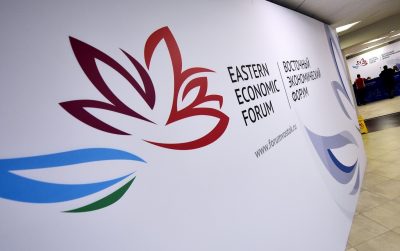The Forthcoming Eastern Economic Forum: Of Geostrategic Significance, Russia’s Vision of the “Asian Sea Arc”

September’s Eastern Economic Forum in Russia’s Far East city of Vladivostok will see the participation of the Indian, Japanese, Malaysian, and Mongolian leaders with whom Moscow is attempting to advance its vision of the “Asian Sea Arc” by integrating itself into the joint Indo-Japanese “Asia-Africa Growth Corridor” and comprehensively diversifying its “Pivot to Asia” away from its hitherto dependence on China as part of its hemispheric “balancing” strategy.
***
The upcoming Eastern Economic Forum that’s scheduled to take place in September in Russia’s Far East city of Vladivostok is shaping up to be an event of premier geostrategic significance after it was announced that the Indian, Japanese, Malaysian, and Mongolian leaders plan to participate in it. India and Japan are jointly pioneering the “Asia-Africa Growth Corridor” (AAGC) that they envision competing with China’s Belt & Road Initiative (BRI), not in the hard infrastructural sense of course but in its soft counterpart by taking advantage of the educational, entrepreneurial, healthcare, microfinance, and other spheres that Beijing has thus far neglected as it instead prioritizes its Silk Road megaprojects.
The author advised the Duma during a topical roundtable discussion last September to do its utmost to bring the AAGC to the Far East in order to make this region the next frontier for multipolarity, and it appears as though this suggestion was heeded when considering the importance of the aforementioned four invitees. Russia doesn’t just want them to invest in its underdeveloped infrastructure there (which could also assist the AAGC in pioneering a non-Chinese trade corridor for connecting with mineral-rich Mongolia), but hopes to build upon any prospective deals in this respect in order to position the Far East as its springboard for launching the “Asian Sea Arc” (ASA) that the author proposed nearly four years ago.
The concept is simple enough, and it’s that Vladivostok could become Russia’s “window to the East” by serving as its economic point of contact with the rapidly growing economies of East, Southeast, and South Asia, which could also contribute to comprehensively diversifying its “Pivot to Asia” away from its hitherto dependence on China as part of Moscow’s hemispheric “balancing” strategy. This approach could further the chances that Russia reaches a “New Detente” with the US in the event that it masterfully leverages its global appeal as a “third choice” between America and China in order to launch a “Non-Aligned Movement 2.0” along the lines of what Valdai Club programme director Oleg Barabanov proposed back in May.
The hard truth about Russian-Chinese economic relations is that the neighboring Great Powers have yet to realize their full potential for a variety of reasons that mostly have to do with the unease of big business representatives in Moscow and Beijing’s hesitation to openly flout the US’ sanctions regime out of fear that this will make it even more difficult to cut a deal with Trump for ending the so-called “trade war“. Nevertheless, President Putin wholeheartedly committed his country to pursuing the Eurasian Union’s integration with BRI, but that doesn’t preclude Moscow from also partnering with the AAGC in an effort to “balance” between these two “blocs” and attempt to bring them together in pursuit of a “Global Renaissance“.
The first step to doing this, however, is for Russia to encourage the AAGC’s Indian and Japanese leaders to make large-scale investments in the Far East, after which it could expand upon these projects to position itself as a key player in their shared vision. This could in turn enable Russia to actualize its ASA by linking the country with the megaproject’s Japanese, Vietnamese, Malaysian, and Indian nodes, which would altogether advance their collective objective of enhanced maritime connectivity with one another. Furthermore, the strategic inroads that Russia could make with each of these American allies could help dilute the impact of the US’ “Indo-Pacific” strategy for “containing” China, thus making the upcoming EEF an event of unparalleled importance.
*
Note to readers: please click the share buttons above or below. Forward this article to your email lists. Crosspost on your blog site, internet forums. etc.
Andrew Korybko is an American Moscow-based political analyst specializing in the relationship between the US strategy in Afro-Eurasia, China’s One Belt One Road global vision of New Silk Road connectivity, and Hybrid Warfare. He is a frequent contributor to Global Research.
Featured image is from Kun.uz

